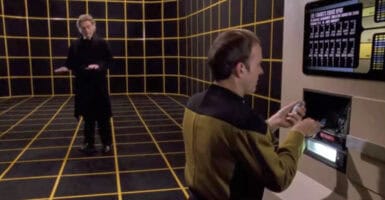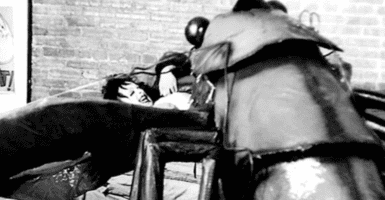Bionic Eyes And Hands Restore Sense Of Sight And Touch
This article is more than 2 years old

We are on the precipice of truly changing what it means to be human, improving upon the ages-old design that nature has set us up with. Not that I’m saying it’s a bad thing, as certain baffling elements of humanity have led to the Holocaust, the Rwandan genocide, and Milli Vanilli. We’re now at the point where bionic eyes and hands are not only feasible, but a reality.
The Argus II, developed by medical device company Second Sight, helps people suffering from Retinitis pigmentosa (RP), a genetic degenerative eye disease affecting around 100,000 people, slowly killing off all the light-sensing cells in the eye. The machine was recently approved for production and sale by the U.S. FDA.
A camera is attached to a pair of glasses and a visual processor that can be worn on the hip. The camera sends visual information to the processor, where it’s sent right back to the glasses and transmitted wirelessly to a series of electrodes attached to the back of the retina. The 69 electrodes allow the eye to see 60 pixels, which isn’t very much if you’re trying to edit a book, but as far as allowing wearers to avoid running into tables and doors while being able to roughly recognize everything in front of them, it’s a great invention. The goal is to advance the hardware to allow for a greater definition in the visuals being seen. Here’s a short tutorial video about the Argus II.
Just as amazing, if not more so, is the first bionic hand to give users actual sensory feedback, which allows them a world of movements never before possible. The invention, created by Dr. Silvestro Micera of the Ecole Polytechnique Federale de Lausanne in Switzerland, will be attached to an unnamed volunteer later this year and will, for the first time, directly connect a prosthetic hand and a person’s arm. This will be accomplished by implanting “intraneural electrodes” to the median and ulnar nerves inside the arm, thus allowing the patient’s brain to directly connect to the hand, moving it while receiving signals that actually convey a sense of touch.
“This is real progress, real hope for amputees. It will be the first prosthetic that will provide real-time sensory feedback for grasping,” says Dr. Micera. “It is clear that the more sensory feeling an amputee has, the more likely you will get full acceptance of that limb.”
An earlier form of the prototype was worn by someone who’d lost their arm in a car accident, and while the user was able to make a fist and feel needles being poked into the hand’s palm, the device has evolved, and can offer many more pressure points on the finger, as well as in the wrist. If the volunteer patient is able to wear the hand for over a month without any problems, a working model will be developed and is foreseen to be out on the market in the next two years.
I hope I’m not alone in thinking that, after the technology is perfected, a Steampunk artist should come in and design these things to allow a much more interesting aesthetic.












